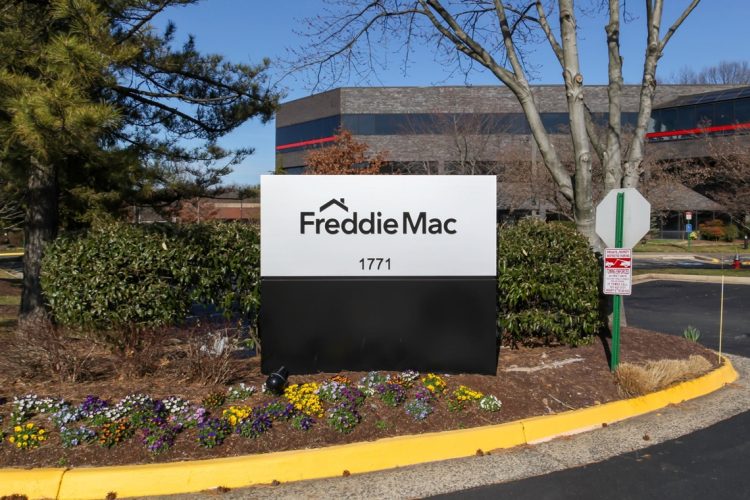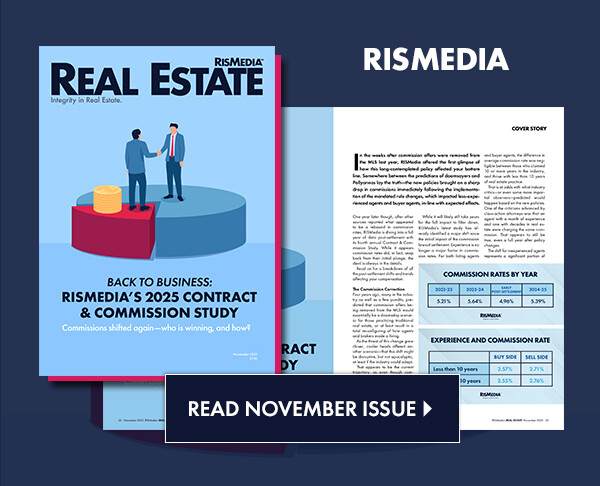The Trump administration is planning to sell stock in mortgage giants Fannie Mae and Freddie Mac through a public offering later this year, potentially raising $30 billion for the federal government, according to a report from the Wall Street Journal. A senior administration official confirmed the plans separately to Axios on Friday, the news outlet reported.
But with scant details on many of the technical aspects of the monumentally complex process of easing the two companies out of a nearly two-decade conservatorship, industry stakeholders are asking for more information.
“The GSEs are the backbone of middle-class homeownership, financing nearly half of all U.S. home purchases,” a National Association of Realtors® (NAR) spokesperson told RISMedia. “Ending conservatorship is a worthy goal, but not at the expense of the affordable, stable mortgage financing Americans rely on in every market and every economy.”
The Mortgage Bankers Association (MBA), which earlier this year told members that removing Fannie and Freddie from conservatorship was “not a priority” for the administration, didn’t comment directly on the IPO report, but did make it clear that Fannie and Freddie’s release from conservatorship won’t be as simple as it sounds.
“The list of complex and critical issues that must be addressed before a responsible release from conservatorship can be executed is long,” an MBA spokesperson told RISMedia. “It includes details of the scope of a government guarantee on agency MBS, the resolution of the capital stack, ratings agency reactions to a release, risk weights on post-conservatorship GSE MBS, the effect of exit on investor appetite for GSE MBS, the liquidity and fungibility of the UMBS market post-exit, and many more.”
President Trump himself seemed to confirm the news—and perhaps the timing as well—in an AI-generated post on Truth Social over the weekend. The image showed Trump ringing the opening bell at the New York Stock Exchange (NYSE) in front of a backdrop dated November 2025. The listing was for a company called The Great American Mortgage Corporation with a “MAGA” ticker symbol.
However, the White House has yet to confirm the news, and the Federal Housing Finance Agency (FHFA)—the agency that oversees Fannie Mae and Freddie Mac—has not returned RISMedia’s requests for comment.
If the plan comes to fruition, it would be the largest IPO in U.S. history, surpassing the $21 billion Alibaba offering on the NYSE in 2014. Shares of both Fannie and Freddie were up more than 20% by market closing on Friday, but details of the plan are still unclear.
The NAR spokesperson explicitly advocated for proceeds of the sale to be “reinvested in housing—through stronger GSE capital, more supply or lower costs for buyers.”
“After years in conservatorship, taxpayers and homebuyers deserve a careful, transparent plan that protects the future of homeownership, not short-term profits,” the spokesperson said.
Sources told the Journal that the administration is debating whether to offer the two government-sponsored enterprises (GSEs) together as a single entity or separately.
President Trump and top administration officials met personally with CEOs from Morgan Stanley, JPMorgan Chase, Bank of America, CitiGroup, Goldman Sachs and Wells Fargo in recent weeks to discuss the plans in Washington, D.C., the Journal reported.
Fannie Mae and Freddie Mac, which back the majority of U.S. mortgages on the secondary market, have been under federal conservatorship since September 2008 following their insolvency that contributed to the Great Recession. The Treasury Department currently holds warrants to purchase about 80% of common stock in both companies, along with senior preferred shares.
The Congressional Budget Office (CBO) estimates that privatizing the agencies would have mixed effects on the federal budget, according to a July report. While it would save money by no longer subsidizing below-market mortgage guarantees of nearly $82 billion over nine years, the government would lose steady income that the companies currently generate.
The CBO projects that these savings and losses would cancel each other out. In other words, removing the agencies from conservatorship wouldn’t significantly reduce the federal deficit despite potentially raising $30 billion from an IPO.
What happens to mortgage rates if Fannie and Freddie go public?
If Fannie and Freddie are released from conservatorship and privatized without the government’s explicit guarantee, mortgage rates could spike significantly, further hampering affordability. That’s something the market is already struggling with.
Trump has been vocal about taking the GSEs private since his first term, but the plan never took shape.
In a post on Truth Social in May, Trump reiterated his interest in the GSEs: “I am working on TAKING THESE AMAZING COMPANIES PUBLIC, but I want to be clear, the U.S. Government will keep its implicit GUARANTEES, and I will stay strong in my position on overseeing them as President. These Agencies are now doing very well, and will help us to, MAKE AMERICA GREAT AGAIN!”
FHFA Director Bill Pulte recently said the firms would remain in conservatorship with the government’s explicit guarantee, but it would “take pieces, or some of, the companies public,” according to Barron’s. This could bring rates down, but it increases the risk of the agencies needing taxpayer help if the housing market tanks.
Both NAR and MBA focused on these potential pitfalls, with the NAR spokesperson pushing for clarity on “guarantees, rates, pricing, oversight and safeguards to prevent past mistakes,” while the MBA spokesperson warned of potential “missteps” that “can lead to market disruption and increase the cost of borrowing at a time when rates are already elevated.”












